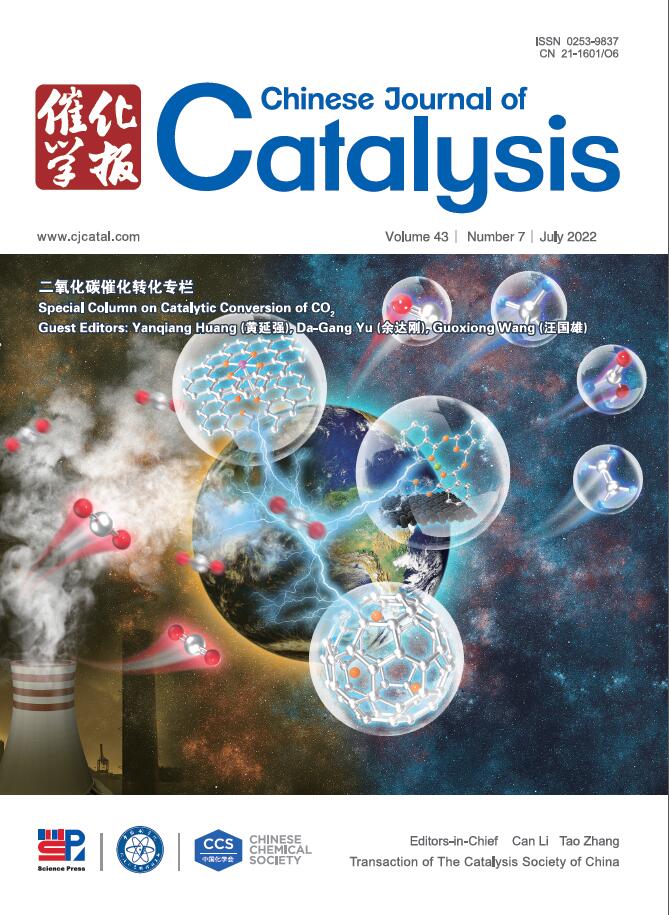Tandem design on electrocatalysts and reactors for electrochemical CO2 reduction
IF 15.7
1区 化学
Q1 CHEMISTRY, APPLIED
引用次数: 0
Abstract
Electrochemical CO2 reduction (ECR) driven by intermittent renewable energy sources is an emerging technology to achieve net-zero CO2 emissions. Tandem electrochemical CO2 reduction (T-ECR), employs tandem catalysts with synergistic or complementary functions to efficiently convert CO2 into multi-carbon (C2+) products in a succession of reactions within single or sequentially coupled reactors. However, the lack of clear interpretation and systematic understanding of T-ECR mechanisms has resulted in suboptimal current outcomes. This review presents new perspectives and summarizes recent advancements in efficient T-ECR across various scales, including synergistic tandem catalysis at the microscopic scale, relay tandem catalysis at the mesoscopic scale, and tandem reactors at the macroscopic scale. We begin by outlining the principle of tandem catalysis, followed by discuss on tandem catalyst design, the electrode construction, and reactor configuration. Additionally, we address the challenges and prospects of tandem strategies, emphasizing the integration of machine learning, theoretical calculations, and advanced characterization techniques for developing industry-scale CO2 valorization.
电化学CO2还原的电催化剂和反应器串联设计
利用间歇性可再生能源驱动的电化学CO2还原(ECR)技术是实现CO2净零排放的新兴技术。串联电化学CO2还原(T-ECR)是利用具有协同或互补功能的串联催化剂,在单个或顺序耦合反应器内的一系列反应中将CO2高效转化为多碳(C2+)产物。然而,由于缺乏对T-ECR机制的清晰解释和系统理解,目前的结果并不理想。本文从微观尺度上的协同串联催化、介观尺度上的接力串联催化和宏观尺度上的串联反应器三个方面综述了高效T-ECR研究的新方向和最新进展。我们首先概述了串联催化的原理,然后讨论了串联催化剂的设计、电极结构和反应器配置。此外,我们还讨论了串联策略的挑战和前景,强调了机器学习、理论计算和先进表征技术的集成,以开发工业规模的二氧化碳增值。
本文章由计算机程序翻译,如有差异,请以英文原文为准。
求助全文
约1分钟内获得全文
求助全文
来源期刊

Chinese Journal of Catalysis
工程技术-工程:化工
CiteScore
25.80
自引率
10.30%
发文量
235
审稿时长
1.2 months
期刊介绍:
The journal covers a broad scope, encompassing new trends in catalysis for applications in energy production, environmental protection, and the preparation of materials, petroleum chemicals, and fine chemicals. It explores the scientific foundation for preparing and activating catalysts of commercial interest, emphasizing representative models.The focus includes spectroscopic methods for structural characterization, especially in situ techniques, as well as new theoretical methods with practical impact in catalysis and catalytic reactions.The journal delves into the relationship between homogeneous and heterogeneous catalysis and includes theoretical studies on the structure and reactivity of catalysts.Additionally, contributions on photocatalysis, biocatalysis, surface science, and catalysis-related chemical kinetics are welcomed.
 求助内容:
求助内容: 应助结果提醒方式:
应助结果提醒方式:


